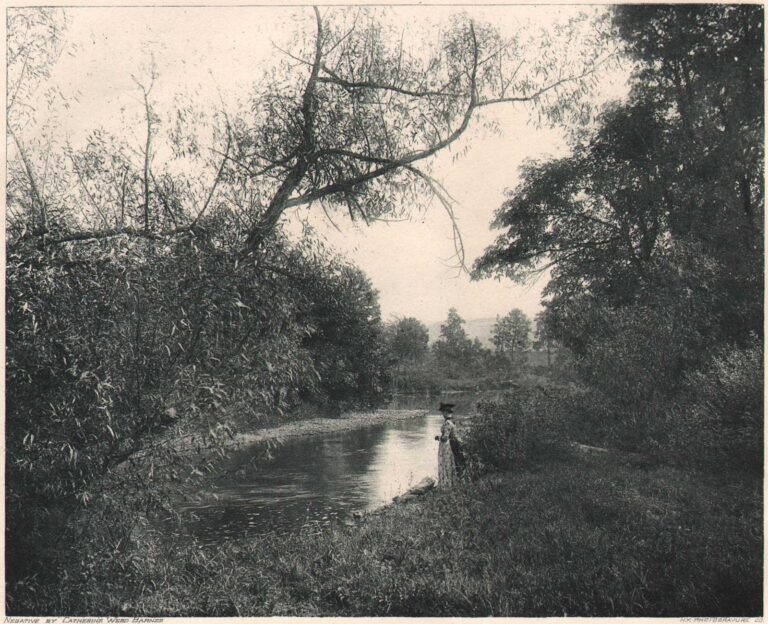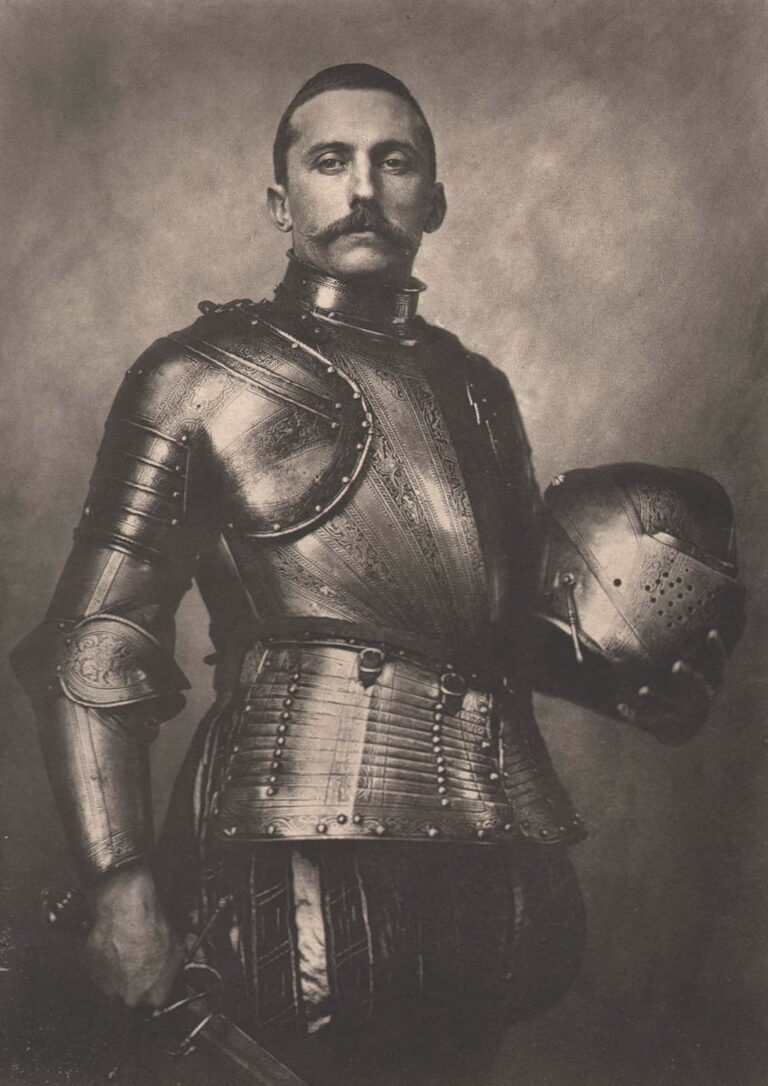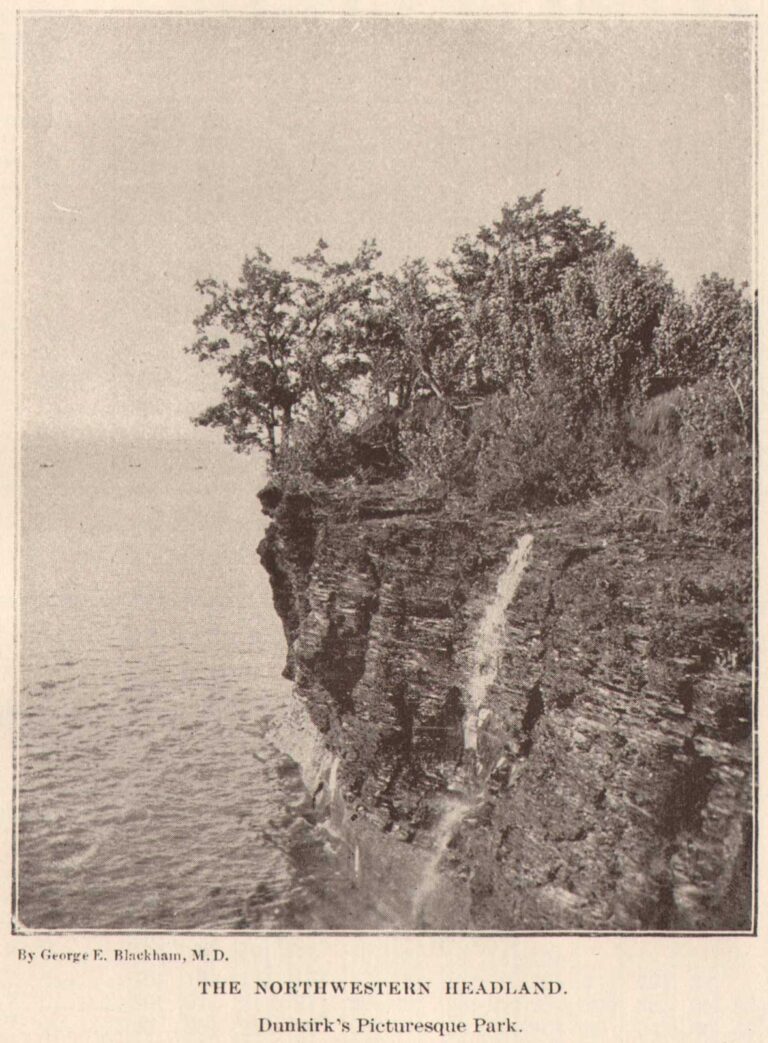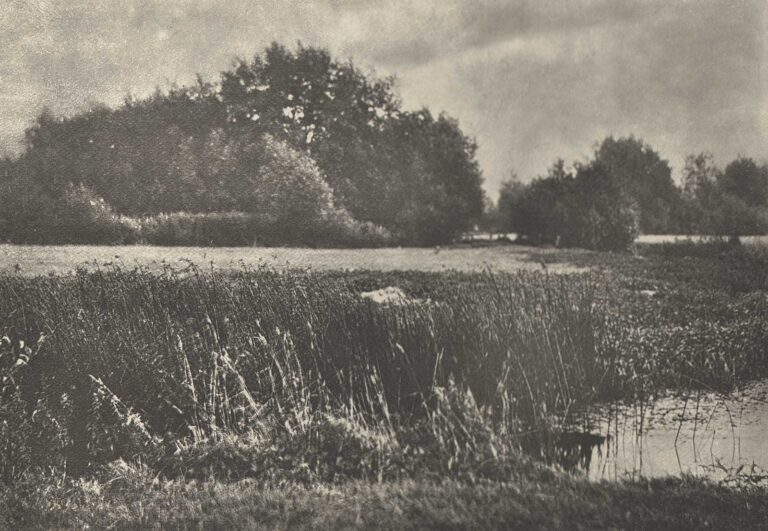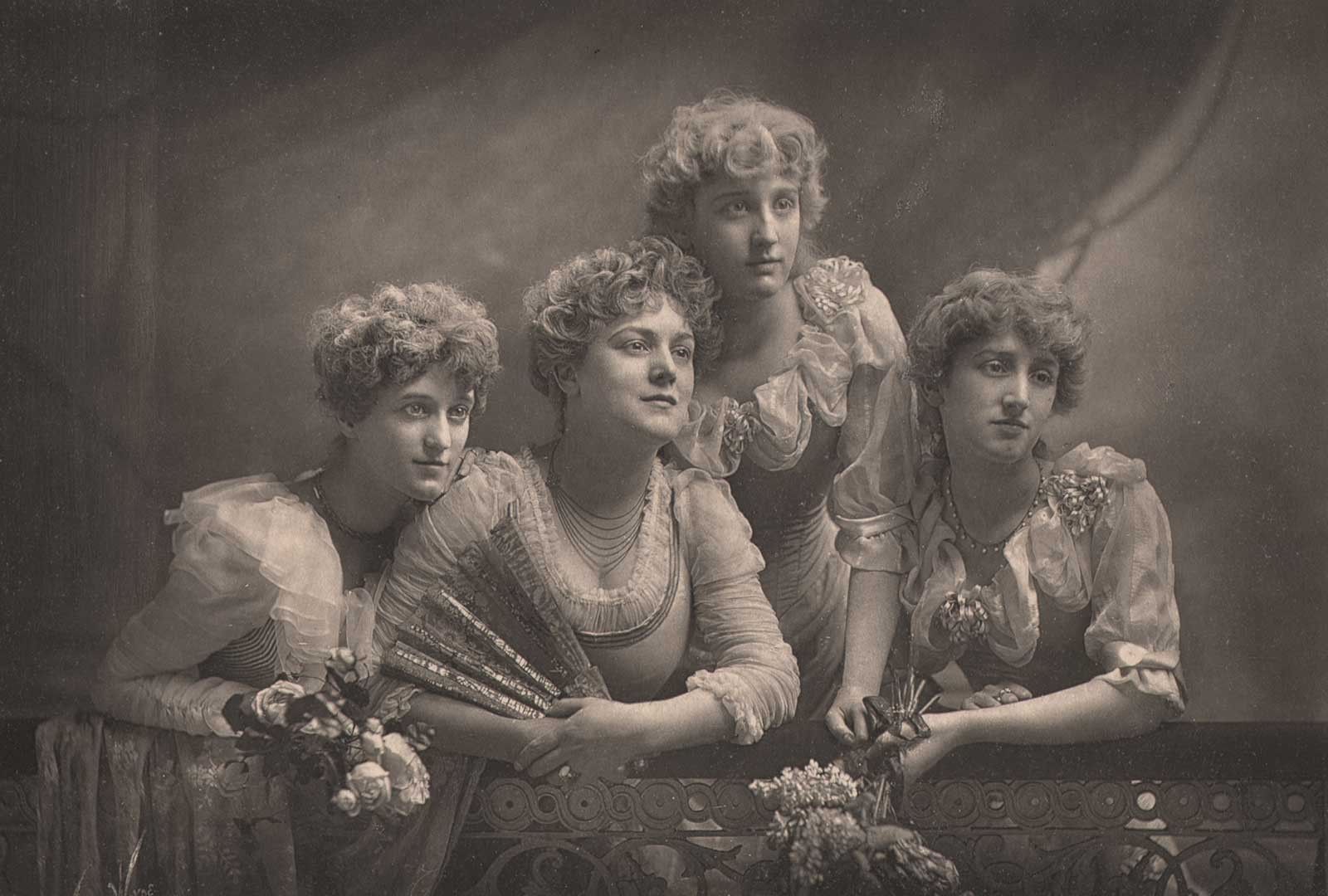
Group of the Misses Dene
Commenting in the accompanying catalogue letterpress, Henry Peach Robinson writes of Henry Van der Weyde’s work and this plate:
Portraiture, as usual, forms the smallest part of the exhibition, and is almost entirely professional; but the quality is generally exceedingly good. Nevertheless, there seems to be a limit to the perfection of professional portraiture, and this limit Mr. Van der Weyde, in our opinion, has reached. Surely nothing could be finer than some of the specimens in his frame (230), or in better taste. We have no space left to go through them, but must call attention to their great style, the singular perfection of modelling without excessive re-touching, and the artistic arrangement of the groups. It has never been sufficiently acknowledged that Mr. Van der Weyde was the first to introduce the electric light for portraiture, and he has brought its use to great perfection. Seeing how prevalent the use of artificial light now is in photography, it is singular Mr. Van der Weyde has never been asked to accept the progress medal of the Society. We reproduce the fine group of the Misses Dene.
Biography: Henry Van der Weyde -1838–1924
Henry Van der Weyde (1838–1924) was a Dutch-born English painter and photographer, best known for his photographic portraits of the late 19th century. His is considered a photographic pioneer in the use of electric light in photography. Amongst his portraits are architect William Burges (c.1880),Alexandra, Princess of Wales,[1]A. E. Housman,[2] actresses Mary Anderson(1887) and Dorothy Dene (1880s), Sir Edwin Arnold, bodybuilder Eugen Sandow (1889) and explorer Fridtjof Nansen (1897).
Born at Zierikzee in the Netherlands on 30 August 1838, Van Der Weyde was the son of Doctor Peter Henri Van Der Weyde. In 1850 his family emigrated to the United States and he later served in the American Civil War. He emigrated to England in 1870. He set up his photographic studio at 182 Regent Street in London in 1877, and began using the logo “The Van der Weyde Light”.[3] That year he became the first photographer to install and take portraits by electric light which permitted him to make many portraits in a short period of time.[4] A founding member of the Linked Ring Brotherhood, in 1892 he publicised his photo corrector (Rectograph) which is said to have “caused a stir in the world of photography”. [4] (Wikipedia accessed December, 2017)
The Dene sisters were Victorian-era stage actors. The most famous, Dorothy Dene, 1859-1899, seen in this photo second from left, was born Ada Alice Pullen. She was additionally famous for being an artist’s model for the painter Frederick Leighton and some of his associates. (Wikipedia accessed December, 2017)
